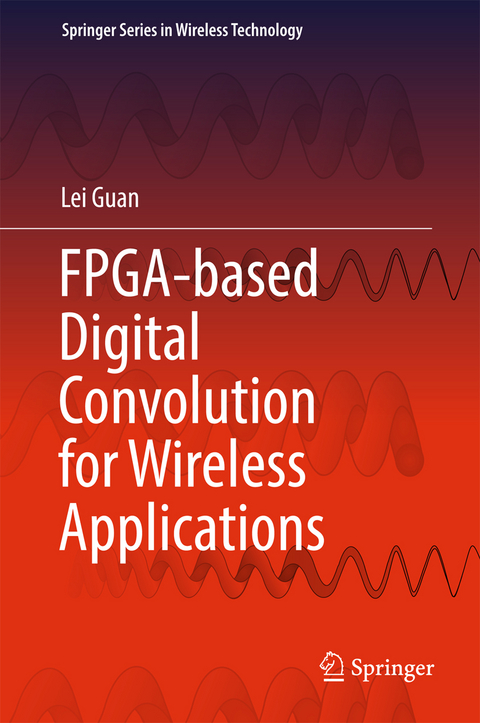FPGA-based Digital Convolution for Wireless Applications
Springer International Publishing (Verlag)
9783319519999 (ISBN)
This book presents essential perspectives on digital convolutions in wireless communications systems and illustrates their corresponding efficient real-time field-programmable gate array (FPGA) implementations.
FPGAs or generic all programmable devices will soon become widespread, serving as the "brains" of all types of real-time smart signal processing systems, like smart networks, smart homes and smart cities. The book examines digital convolution by bringing together the following main elements: the fundamental theory behind the mathematical formulae together with corresponding physical phenomena; virtualized algorithm simulation together with benchmark real-time FPGA implementations; and detailed, state-of-the-art case studies on wireless applications, including popular linear convolution in digital front ends (DFEs); nonlinear convolution in digital pre-distortion (DPD) enabled high-efficiency wireless RF transceivers; and fast linear convolution in massive multiple-input multiple-output (MIMO) systems.
After reading this book, students and professionals will be able to:
· Understand digital convolution with inside-out information: discover what convolution is, why it is important and how it works.
· Enhance their FPGA design skills, i.e., enhance their FPGA-related prototyping capability with model-based hands-on examples.
· Rapidly expand their digital signal processing (DSP) blocks: to examine how to rapidly and efficiently create (DSP) functional blocks on a programmable FPGA chip as a reusable intellectual property (IP) core.
· Upgrade their expertise as both "thinkers" and "doers": minimize/close the gap between mathematical equations and FPGA implementations for existing and emerging wireless applications.
Dr. Lei Guan has been actively working as wireless communications researcher, FPGA designer, anddigital system architect for 10 years with extensive R&D experience in FPGA & MATLAB baseddigital signal processing, particularly using Xilinx FPGAs and all programmable SoCs for digitally assisted wireless RF systems and fully tunable software defined radio (SDR) systems. He is amember of technical staff at Mobile Radio Research, Nokia Bell Labs. He holds a B.E. degree inCommunications Engineering and a M.E. degree in Telecommunication Systems from HarbinInstitute of Technology (HIT), P. R. China (Top-five University in China in engineering subject) and aPh.D. degree in Electronic Engineering from University College Dublin, Ireland.
Preface.- Chapter 1. Introduction.- Chapter 2. FPGA and Digital Signal Processing.- Chapter 3. FPGA-based Linear Convolution.- Chapter 4. FPGA-based Nonlinear Convolution.- Chapter 5. Advanced FPGA-based Fast Linear Convolution.- Chapter 6. FPGA-based DSP System Verification.- References.
| Erscheinungsdatum | 02.02.2017 |
|---|---|
| Reihe/Serie | Springer Series in Wireless Technology |
| Zusatzinfo | XVII, 151 p. 128 illus., 61 illus. in color. |
| Verlagsort | Cham |
| Sprache | englisch |
| Maße | 155 x 235 mm |
| Themenwelt | Informatik ► Grafik / Design ► Digitale Bildverarbeitung |
| Mathematik / Informatik ► Informatik ► Netzwerke | |
| Technik ► Elektrotechnik / Energietechnik | |
| Technik ► Nachrichtentechnik | |
| Schlagworte | Communications Engineering, Networks • Communications engineering / telecommunications • Computer networking and communications • computer vision • digital signal processing • Distributed Databases • Engineering • Engineering: general • Fast Fourier Transformation (FFT) • Field Programmable Gate Array (FPGA) • Image Processing • image processing and computer vision • Imaging systems and technology • Input/Output and Data Communications • Linear convolution • Nonlinear convolution • Signal, Image and Speech Processing • Signal Processing • Wireless Transceivers |
| ISBN-13 | 9783319519999 / 9783319519999 |
| Zustand | Neuware |
| Informationen gemäß Produktsicherheitsverordnung (GPSR) | |
| Haben Sie eine Frage zum Produkt? |
aus dem Bereich




